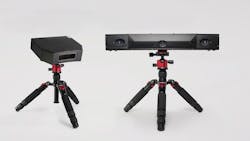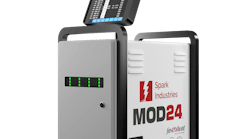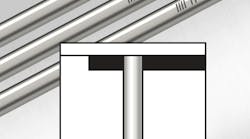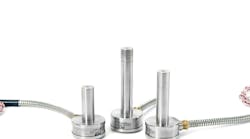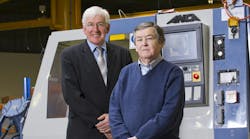While giant corporations have used 3-D scanners for decades, recent advances in technology and reductions in price are giving the little guy access to the technology.
Thomas Tong, president of Polyga Inc., which develops 3-D scanning and measurement technologies, said, “The biggest change we’ve seen now is, traditionally, these tools have been purchased by guys like Boeing and GM. I think … prices have gone down enough that it’s affordable to [an] average machine shop or average mold maker.” The company recently extended its HDI Compact line of scanners this spring with the L6 and the C504.
Tong said scanners have become useful for mold makers because customers are increasingly demanding inspection reports with delivery of molds or tooling. “This enables the mold maker to ensure that when they deliver … that the product matches their customer’s specifications and all tolerances are in specification. The last thing you want to do is to deliver the product and then have an argument once [a] bunch of bad [parts have] been made.”
Khan said one of his customers is the owner of a small shop that makes tooling for a supplier of automotive headlights. The owner had to send his molds from his shop in Grand Rapids, Mich., to Chicago to be scanned, inspected and color-mapped. Besides the cost of the service, he also had to deal with the time lost to outsource that step. Once Khan was able to offer him a hardware and software combination below $30,000, that owner was able to bring scanning in-house.
Polyga’s new scanners offer a simple path to scanning, with fixed fields of view. Khan said either would be a good fit for mold makers, but the L6 is more appropriate for larger molds or parts, while the C504 can more readily handle parts the size of a thimble or smaller. The C504 model is IP67-rated for protection against dust and moisture, and specially made to work on the factory floor, not just in controlled environments.
Tong said his company is introducing the scanners at a lower price than previous technologies.
The scanners can be used for reverse- engineering tasks, or by plastics processors to inspect parts that are being produced, Tong said.
Tong said scanners are not likely to supplant other measuring tools. “Like any kind of process, there’s no one tool [that] does everything for you, so people use a mix of tools to accomplish what it is they want to do. I don’t think our scanner necessarily replaces a CMM or calipers or hand tools because those tools are great for pulling a handful of points very, very accurately,” Tong said. However, “if you need to characterize the surface, the scanner’s probably your best bet, especially if you want a whole comparison to CAD.”
Khan suggested other ways a scanner could be used. If a tool comes into a shop and it has no 3-D CAD model, the scanner can document that tool’s “as-is” condition. If a mold is in for repair, its “as-is” condition scan can be overlaid with the CAD model of the pristine mold. This can simplify estimating repair costs.
If a tool has been modified, scan data can be used to update an existing CAD model.
And Tong suggested that for plastics processors, a scanner could become part of a program to monitor tool performance and tool lifetime. “This way, you can inspect the tooling on an ongoing basis instead of waiting until too much bad product has been made before repairing or modifying the tool,” he said.
David Tillett, copy editor
Contact:
Khan Consultants,
Elmhurst, Ill., 630-749-2090, www.innovia3d.com
Polyga Inc.,
Burnaby, British Columbia, 604-293-1767, www.polyga.com
